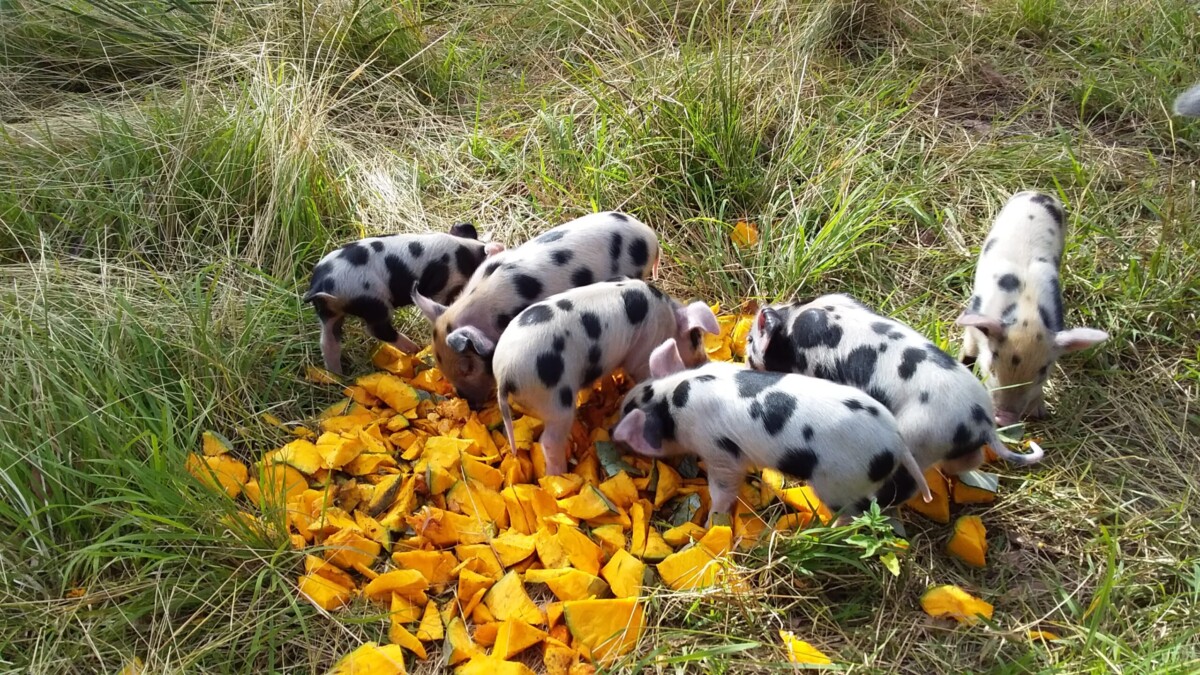In the rolling hills of Boonoo Boonoo, near Tenterfield in northern New South Wales, something remarkable is happening. What started as Emily Pierce and Glen Moir’s dream to produce the finest organic heritage pork has evolved into a powerful demonstration of how regenerative agriculture can become a lifeline for endangered species.
Their 337-hectare property, home to Le Bon Terroir D’Emj, recently earned recognition as a National Finalist in the 2025 Delicious Harvey Norman Produce Awards – but it’s what’s happening beneath the surface that truly sets this operation apart.
From Devastion to Discovery
The journey hasn’t been easy. Emily and Glen faced bushfires during their property purchase, rebuilt access bridges, battled disease outbreaks, and recovered from the devastating 2019-2020 East Coast bushfires that burned the majority of their property. Yet through their commitment to organic certification and regenerative practices, they’ve created something extraordinary: a refuge for some of Australia’s most threatened species.
Their organic certification was fast-tracked from three years to twelve months thanks to the property’s pristine, virtually untouched condition. Glen’s keen observation skills soon revealed hidden treasures – breeding sites for the threatened Sutton’s Spiny Crayfish. Rather than viewing this as a constraint, Emily and Glen embraced their role as custodians, excluding these critical areas from grazing to protect this vulnerable habitat.

A Moment of Magic Under the Tree
Perhaps the most enchanting discovery came during a quiet moment after farm work. Glen was resting under a tree on a hot day when movement in their rehabilitated dam caught his eye – platypus were swimming in the crystal-clear water.
The dam had once been a poorly-managed drain, but Emily and Glen transformed it with an on-contour leaky dam design. Over twelve months, Glen watched the platypus family establish burrows and successfully breed their first young. Glen believes the platypus chose their property as a refuge because of the superior water quality maintained through organic and regenerative practices, contrasting with poor water quality in surrounding areas due to conventional practices.



Building Bridges Between Science and Agriculture
Ready to Adapt Environmental Services partnered with Emily and Glen’s to connect conservation work with the broader scientific community. We’ve established a partnership with the Quoll Society of Australia for monitoring the endangered spotted tail quoll through camera installations, tracking individuals potentially migrating from neighboring Girraween and Bald Rock National Parks.
For the Sutton’s Spiny Crayfish work, we’re connecting Emily and Glen with university researchers including Nick Wydrod from Flinders University and Rob McCormack, “the crayfish guru,” to create PhD research opportunities and turn their farm into a living laboratory for conservation science.

For the Sutton’s Spiny Crayfish work, we’re connecting Emily and Glen with university researchers including Nick Wydrod from Flinders University and Rob McCormack, “the crayfish guru,” to create PhD research opportunities and turn their farm into a living laboratory for conservation science.
Funding the Future
Through their membership in the Headwater Custodians Landscape Impact Program via Regional Farmers’ Mutual, Emily and Glen accessed NSW Primary Industries Productivity and Abatement Program grant funding. This support is enabling them to explore their natural capital and investigate opportunities for regulated carbon projects through the Clean Energy Regulator, focusing on potential soil carbon improvements from their rotational grazing systems and tree planting projects in open areas of the property.
Recognising that regenerative agriculture and conservation are not just compatible, but mutually reinforcing, Emily and Glen’s rotational grazing with their pastured pork creates the habitat conditions that endangered species desperately need while supporting sustainable farming practices.

The Ripple Effect & Partnership Opportunities
Emily and Glen’s impact extends beyond their property boundaries. This story demonstrates the incredible potential when regenerative agriculture meets conservation science. We encourage researchers working with threatened and endangered species, to explore collaboration opportunities in living laboratory. We have already made connections with Nick Wydrod from Flinders University, and other Sutton’s Spiny Crayfish researchers to connect with us about research opportunities on this remarkable property.
Ready to Adapt Environmental Services specializes in creating connections that make conservation through agriculture possible, bringing together farmers, government programs, research institutions, and conservation organizations to benefit both sustainable agriculture and biodiversity conservation.
Empowering Conservation Through Agriculture
Emily and Glen’s journey from organic pork producers to conservation champions illustrates the transformative potential of regenerative agriculture. Their property has become a beacon of hope for endangered species while producing award-winning food – proving that we don’t have to choose between agricultural productivity and environmental protection.
As we face increasing pressure on our natural systems, stories like this remind us that farmers can be our greatest conservation allies. Through thoughtful partnerships and support, we can empower more agricultural operations to become refuges for threatened species while building resilient, profitable farming enterprises.
Ready to Adapt Environmental Services is committed to empowering conservation through agriculture. If you’re interested in exploring the natural capital potential of your property or learning more about how we partner with agriculture, we’d love to hear from you.


Leave a Reply